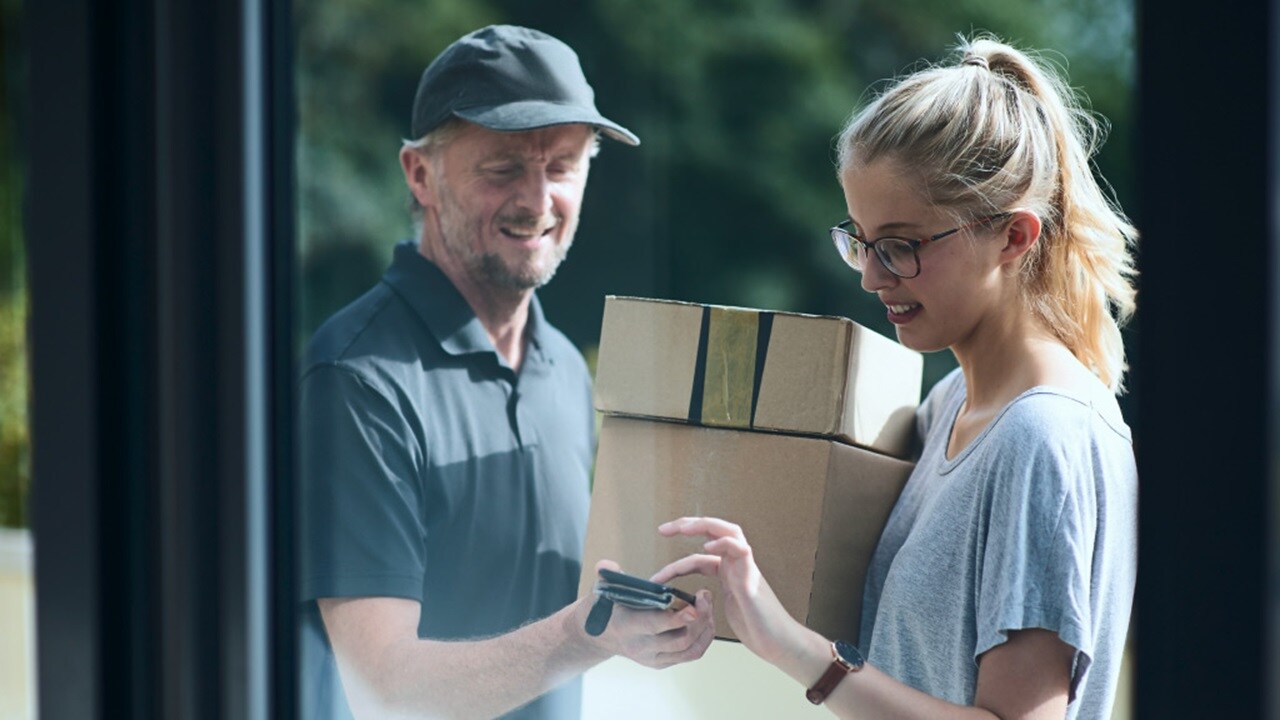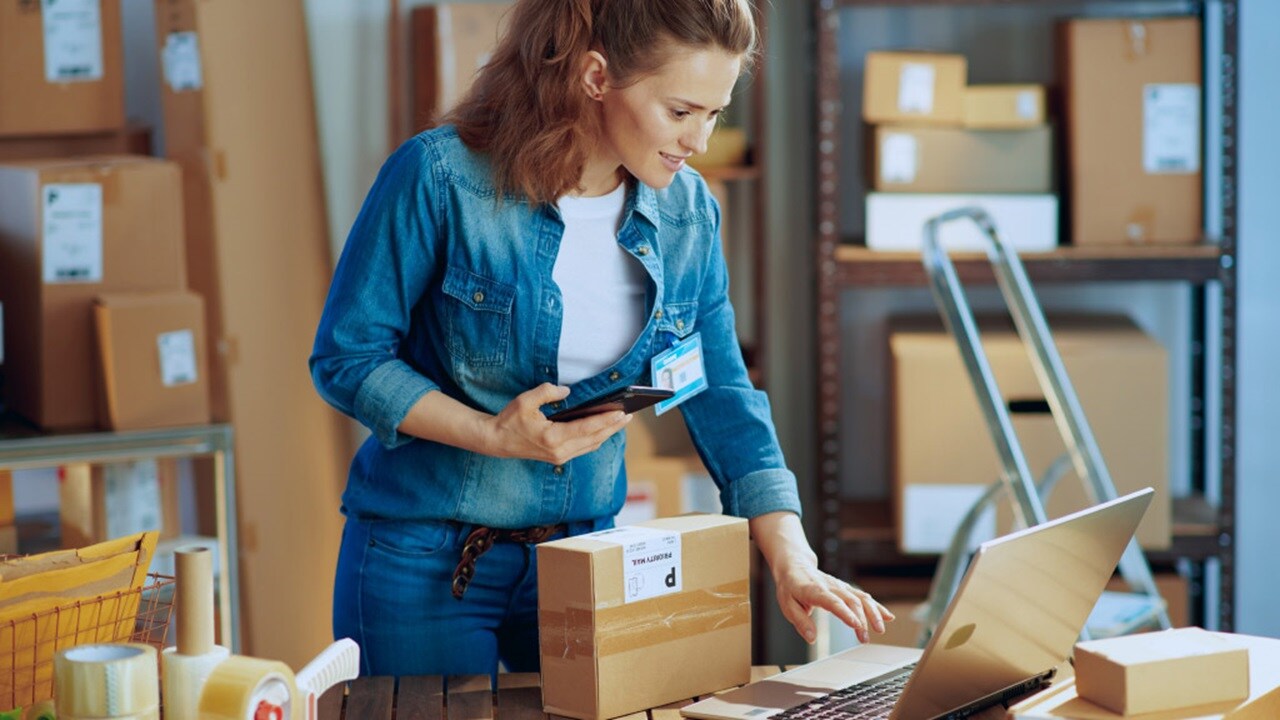For a long time, the narrative around e-commerce has centred on speed. If you provide fast delivery, so the story goes, you’ll be able to remain competitive in a fiercely contested digital marketplace. In other words, survival of the fittest.
That’s no longer the case. The story has moved on, as Forbes puts it, ‘from super speed to super convenience,’ while the latest research in the Journal of Retailing and Consumer Services debunks ‘the myth that everyone needs fast delivery.’ Today, it’s more about crafting innovative experiences that truly resonate with consumers’ nuanced needs and wants. Put another way, it’s survival of the smartest.
In this blog, we’ll look at some of these emerging experiences with a focus on where the e-commerce industry is heading and explore how omnichannel fulfilment can support these developments.

What are the next big things for e-commerce in 2024 and beyond?
Personalisation
Most online retailers are effective at using customer data to recommend products and cross-sell. Just take a moment to think of all the ‘customers who liked this product also bought’ features on your favourite websites.
What’s missing, though, is the application of this logic to other areas, such as delivery. As we move forward, it’s not only about providing convenient and accurate delivery slots – those that suit the customer’s schedule – it’s also about remembering that a specific customer likes to get their shopping delivered late on a Monday evening. Or if you charge for delivery, can you create a loyalty system whereby for every five orders, the sixth delivery is free of charge?
BOPIS, BORIS and ROPIS
Buy online, pick up in-store (BOPIS) is not new – back in 2013, turnover for click-and-collect models in Europe was already some €18 billion. But one thing’s for sure: It’s growing. Today the European BOPIS turnover is approximately €72.6 billion, while the global market is expected to reach $666.2 billion by 2028. Reserve online, pickup in-store (ROPIS), on the other hand, allows more cautious customers to make sure each purchase is right for them. There’s not a huge amount of data on ROPIS, but a Digital Commerce 360 survey from 2021 showed that only 5.7% of the top 500 retailers offered ROPIS at the time (down from 7.4% the year before), a potential differentiator in a market where it’s difficult to stand out. Buy online, return in-store (BORIS), meanwhile, is becoming more popular, not for customer ease but because free postal returns are costly. In the last 12 months, a long list of retailers, including H&M, Boohoo, New Look and Uniqlo, started charging for returns unless they were returned in-store.
Second-hand marketplaces and re-commerce
With over half of European adults agreeing that it’s worth paying more for products that consider their environmental impact, it’s clear that recycling offers a growing source of competitive advantage. And the likes of Vinted and Depop have come along with a revised model whereby there are no fees to pay as a seller, catching incumbents like eBay off guard and further incentivising a market that was already growing rapidly.
So, how can you compete? You don’t have to build your own second-hand marketplace, but you can take a steer from Vinted et al and appeal to the future consumer. Take the technology industry. It generates 50 million tons of e-waste globally each year. Can your fulfilment operations do its bit to fight waste through a returns network that makes it easier for consumers to recycle?
AI
Of course, AI also has a huge part to play going forward, with estimates showing that global spending on AI in e-commerce is expected to reach $8 billion by the close of the year. But what do some of these innovations look like?
In the US, Walmart’s Text to Shop service is one example. It allows customers to add items to their shopping cart while they’re on the move simply by texting Walmart. If you remember that you’ve run out of milk while you’re picking your kids up from school, for instance, you can text Walmart ‘Milk’. The service then uses AI to understand the intention behind your text, and from that logic, it presents the milk product you usually buy as an option to add, swap or remove from your cart – all within a text format. Within six months of availability, usage of the service increased 40-fold.

What does this mean for omnichannel fulfilment?
Fulfilment is the motor that drives e-commerce experiences. So, if e-commerce experiences are getting smarter, fulfilment needs to get smarter too.
This all starts with data. The only way smart experiences can happen is through connected data. Take ROPIS, for instance. That shopping experience isn’t possible unless your data is accurate across all your channels. Imagine if one of your customers researched online and came to the store to find that the product wasn’t there. You’d have wasted their time and energy and they’re going to feel pretty aggrieved. To avoid this and provide a consistent omnichannel experience, now and in the future, you need all your inventory data integrated across all your channels and backend systems.
Then there’s the development of smarter storage models to support these experiences. Physical stores have to be multipurpose now, stocking for in-store shoppers and online customers. Dark stores (high-street shops converted into online-only fulfilment centres) are on the rise to help get orders to consumers faster. Particularly with disruptors like Gorillas and Getir promising the delivery of groceries within ten minutes, you have to adapt your storage model to get closer to the customer. It’s adapt or die.
In addition, it’s not just about where you house your goods. It’s also about how you transport them. When it comes to delivery, the key questions today are: Can you make it convenient for the customer? Can you fit their schedule? That’s not an easy task. Especially when you’re trying to do it at scale. So, how do you do all this in a smart way?
Partner with omnichannel fulfilment experts
Bringing the e-commerce experiences of the future forward is a mammoth task, and the smartest companies are realising they can’t do it alone. Which is how Maersk can help.
By partnering with us, you benefit from our technology solutions, such as our warehouse management system, which gives you the visibility of your inventory data that’s foundational to all these new experiences. You get to benefit from our vast warehousing infrastructure, more than 450 warehouses and 350 fulfilment centres globally, so your goods are in the right places to enable innovative new fulfilment models. And you get to benefit from our extensive multi-carrier delivery network, of over 300 Last Mile carriers in Europe alone, so you have a menu of transport options to make all this possible.
After all, when it’s survival of the smartest, it makes sense to partner with the experts.
For more information on how you can develop your omnichannel fulfilment strategy, download our interactive workbook:
您是否想隨時獲取未來產業趨勢的必修課?
您完成了,歡迎訂閱!
很抱歉,發送您的聯絡請求時發生問題。
請檢視表單欄位,並確保提供所有必要的正確資訊。若問題仍然存在,請聯絡我們的支援團隊尋求進一步協助。
您是否想隨時獲取未來產業趨勢的必修課?
透過在此表單註冊,您可直接在您的郵箱中接收我們的見解,踏入真正整合物流的世界。只要按幾下,您就可從我們為您量身訂製的文章中獲取靈感,並獲得相關業務見解。您可以隨時取消訂閱。
I agree to receive logistics related news and marketing updates by email, phone, messaging services (e.g. WhatsApp) and other digital platforms, including but not limited to social media (e.g., LinkedIn) from A. P. Moller-Maersk and its affiliated companies (see latest company overview). I understand that I can opt out of such Maersk communications at any time by clicking the unsubscribe link. To see how we use your personal data, please read our Privacy Notification.
By completing this form, you confirm that you agree to the use of your personal data by Maersk as described in our Privacy Notification.













